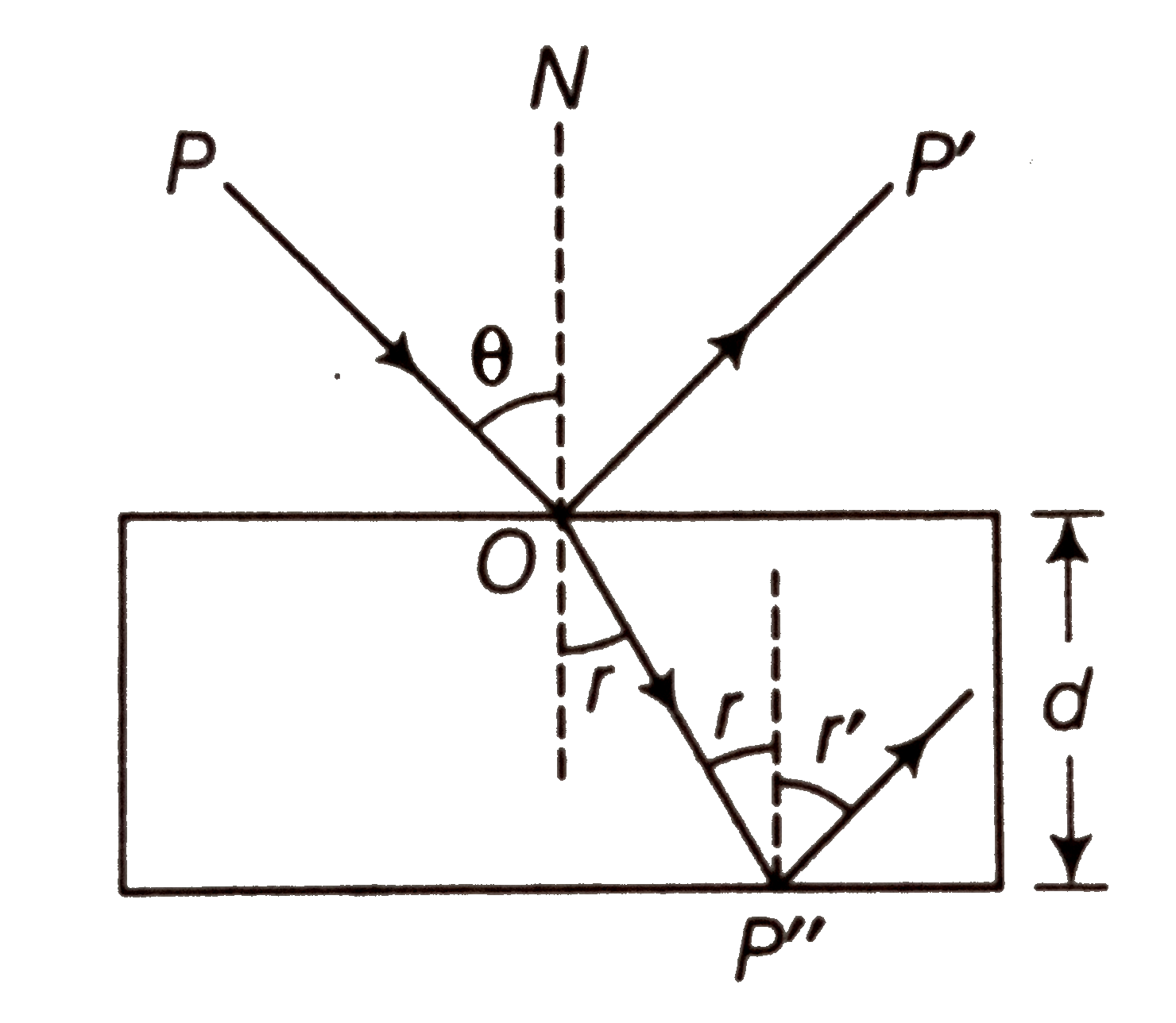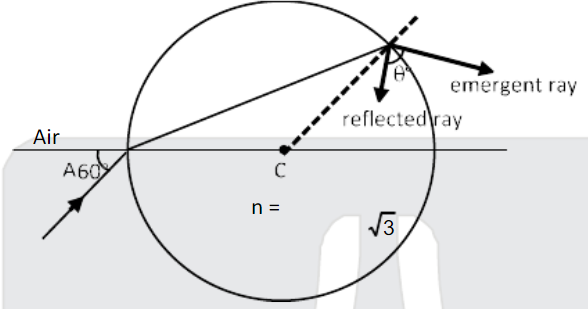Consider a ray of light incident from air onto a slab of glass (refractive index n) of width d, at an angle θ . The phase difference between the ray reflected by the top surface of the glass and the bottom surface is
4πdλ(1−1n2sin2θ)1/2+π
4πdλ(1−1n2sin2θ)1/2
4πdλ(1−1n2sin2θ)1/2+π2
4πdλ(1−1n2sin2θ)1/2+2π
The correct Answer is:A
(a) Consider the diagram , the ray (P) is incident at an angle θ and gets reflected in the direction P' and refracted in the direction P". Due to reflection from the glass medium, there is a phase change of π.
Time taken to travel along OP"
Δt=OPv=d/cosrc/n=ndccosr
From Snell's law, n=sinθsinr
⇒sinr=sinθn
cosr=√1−sin2r=√1−sin2θn2

Δt=ndC(1−sin2θn2)1/2=n2dC(1−sin2θn2)−1/2
Phase difference= Δϕ=2πT×Δt=2πndλ(1−sin2θn2)−1/2
So, net phase difference =Δϕ+π
=4πdλ(1−1n2sin2θ)−1/2+π
Topper's Solved these Questions
- BOOK - NCERT EXEMPLAR ENGLISHCHAPTER - WAVE OPTICSEXERCISE - Very short Answer Type Questions.6videos
WAVE OPTICS
- BOOK - NCERT EXEMPLAR ENGLISHCHAPTER - WAVE OPTICSEXERCISE - Short answer type Questions3videos
WAVE OPTICS
- BOOK - NCERT EXEMPLAR ENGLISHCHAPTER - SEMICONDUCTOR ELECTRONICS: MATERIAL,DEVICES AND SIMPLE CIRCUITEXERCISE - Multiplel choice questions26videos
SEMICONDUCTOR ELECTRONICS: MATERIAL,DEVICES AND SIMPLE CIRCUIT
Similar Questions
Knowledge Check
- Question 1 - Select One
A ray of light strikes a transparent rectangular slab of refractive index √2 at an angle of incidence of 45∘. The angle betweent the reflected and refracted rays is
A75∘B90∘C105∘D120∘
A ray of light incident from air on a glass plate of refractive index n is partly reflected and partly refracted at the two surfaces of the glass. The displacement y0 in the figure is
 View Solution
View SolutionA ray of light is incident on the surface of a glass plate of refractive index √3 at the polarising angle . The angle of incidence and angle of refraction of the ray is
View SolutionA ray of light falls on a glass plate of refractive index μ=1.5.
What is the angle of incidence of the ray if the angle between the reflected and
refracted rays is 90∘?View SolutionA ray of light falls on a glass plate of refractive index μ=1.5.
What is the angle of incidence of the ray if the angle between the reflected and
refracted rays is 90∘?View SolutionLight incidence on a sphere of refractive index √3 placed in a air as shown in Figure. Find the angle (θ)in degree between emergent ray and reflected ray.
 View Solution
View SolutionA ray of light 10−9 second to cross a glass slab of refractive index 1.5. The thickness of the slab will be
View SolutionA ray of light passes from vaccum into a medium of refractive index n. If the angle of incidence is twice the angle of refraction, then the angle of incidence is
View Solution

